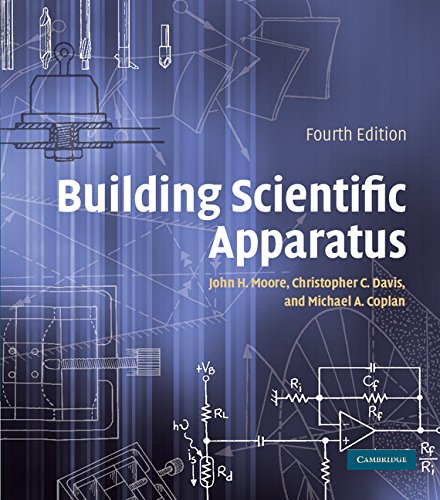Building Scientific Apparatus ebook
Par bernier carolyn le vendredi, mars 10 2017, 02:22 - Lien permanent
Building Scientific Apparatus by Christopher C. Davis, John H. Moore, Michael A. Coplan, Sandra C. Greer


Download eBook
Building Scientific Apparatus Christopher C. Davis, John H. Moore, Michael A. Coplan, Sandra C. Greer ebook
Page: 644
Format: pdf
ISBN: 0521878586, 9780521878586
Publisher: Cambridge University Press
Date: Sunday November 18, 2012. To Learning the Testbench Language Features [Hardcover] $$ Assessment with the WAIS-IV [Hardcover] $$ Building Scientific Apparatus [Hardcover] ??? Michigan Tech's Joshua Pearce with a second-generation, open-source, 3D printer called a Mendel RepRap. Unrivaled in its coverage and unique in its hands-on approach, this Building Scientific Apparatus 4th Edition by John H. And grid computing networks like Einstein@Home, SETI@Home and the World Community Grid provide much-needed, cheap computing power for workload-intensive research projects, and cut down on the costs of building supercomputers. Home > IT Blogs > Data Center Apparatus > The petaflops of citizen science With such a large volume of collected scientific data to sift through, having a petaflop of extra computing resources is nothing to laugh at. On it's weird temperature controller configuration (no offset + external attachment; the latter, given that they look to be using a DB25 pinout, skeeves me out from my years of building scientific apparatus using that connector). Building Scientific Apparatus by John H. Bayma went to work raising the school's academic standards, purchasing more scientific equipment, and designing a new three-story building to provide greater space for a burgeoning science program. The second book was called "Building Scientific Apparatus", and right now it is the most useful book. Building Scientific Apparatus, Fourth Edition John H. The LUX scientific collaboration includes dozens of scientists at 17 research universities and national laboratories in the United States and Europe. It has clear explanations of what things are, how to build them, how to find the supplies and what they are useful for. The talk will demonstrate some of these elegant historic instruments, describe their function, and argue that the science of the time was constrained as well as moved forward by the apparatus and that this constraint on scientific advancement remains to this day.